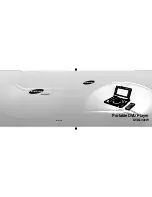
26
5. Use an accurate AC voltmeter to check utility power source voltage across transfer switch terminals N1 and N2. Nominal line-to-line voltage
should be 220 volts AC. If it’s not, verify AC output and wiring from utility source to N1 and N2 lugs at transfer switch.
6. Check utility power source voltage across terminals N1 and the transfer switch neutral lug; then across terminal N2 and neutral. Nominal line-
to-neutral voltage should be 110 volts AC (if wired with a neutral). If it’s not, verify AC output and wiring from utility source to N1 and N2 lugs at
transfer switch.
7. When certain that utility supply voltage is compatible with transfer switch and load circuit ratings, turn OFF the utility power supply to the transfer
switch.
8. On the generator panel, push the MANUAL button. The engine should crank and start.
9. Let the engine warm up for about fi ve minutes to allow internal temperatures to stabilize. Then, set the generator’s main circuit breaker to its ON
(or CLOSED) position.
Proceed with caution! Generator power voltage is now supplied to the transfer switch. Contact with live transfer switch parts will
result in dangerous and possibly fatal electrical shock.
10. Connect an accurate AC voltmeter and a frequency meter across transfer switch terminal lugs E1 and E2. Voltage should be 218-222 at a
frequency of 49.5-50.5 Hz. If it’s not, verify that the MLCB is closed and verify AC output and frequency (Hertz or Hz) at the MLCB. Also verify
wiring from generator to E1 and E2 lugs at transfer switch.
11. Connect the AC voltmeter test leads across terminal lugs E1 and neutral; then across E2 and neutral (if wired with a neutral). In both cases,
voltage reading should be 109-111 volts AC. If it’s not, verify that the MLCB is closed and verify AC output between the E1 and E2 of the MLCB
and Neutral at the generator. Also, verify wiring from generator to E1, E2 ans Neutral lugs at transfer switch.
12. Set the generator’s main circuit breaker to its OFF (or OPEN) position.
13. Push the generator’s OFF button. The engine should shut down.
NOTE: It is important not to proceed until certain that generator AC voltage and frequency are correct and within the stated limits.
7.6 GENERATOR TESTS UNDER LOAD
To test the generator set with electrical loads applied, proceed as follows:
1. Ensure that the generator is OFF.
2. Turn OFF all breakers/electrical loads that will be powered by the generator.
3. Turn OFF the utility power supply to the transfer switch, using the means provided (such as a utility main line circuit breaker).
Do not attempt manual transfer switch operation until all power voltage supplies to the transfer switch have been positively turned
off. Failure to turn off all power voltage supplies will result in extremely hazardous and possibly fatal electrical shock.
4. Manually set the transfer switch to the STANDBY position, i.e., load terminals connected to the generator’s E1/E2 terminals. The transfer switch
operating lever should be down.
5. Push the generator’s MANUAL button. The engine should crank and start immediately.
6. Let the engine stabilize and warm up for a few minutes.
7. Set the generator’s main circuit breaker to its ON (or CLOSED) position. Loads are now powered by the standby generator.
8. Turn ON the circuit breaker/electrical loads that are powered by the generator one by one.
9. Connect a calibrated AC voltmeter and a frequency meter across terminal lugs E1 and E2. Voltage should be approximately 220 volts and
frequency should be 50 Hz. If the voltage and frequency are rapidly dropping as the loads are applied, the generator may be overloading or
there may be a fuel issue. Check amperage value of loads and/or fuel pressure.
10. Let the generator run at full rated load for 20-30 minutes. Listen for unusual noises, vibration or other indications of abnormal operation. Check
for oil leaks, evidence of overheating, etc.
11. Verify gas pressure while under full load.
12. When testing under load is complete, turn OFF electrical loads.
13. Set the generator’s main circuit breaker to the OFF (or OPEN) position.
14. Let the engine run at no-load for 2-5 minutes.
15. Push the generator’s OFF button. The engine should shut down.









































